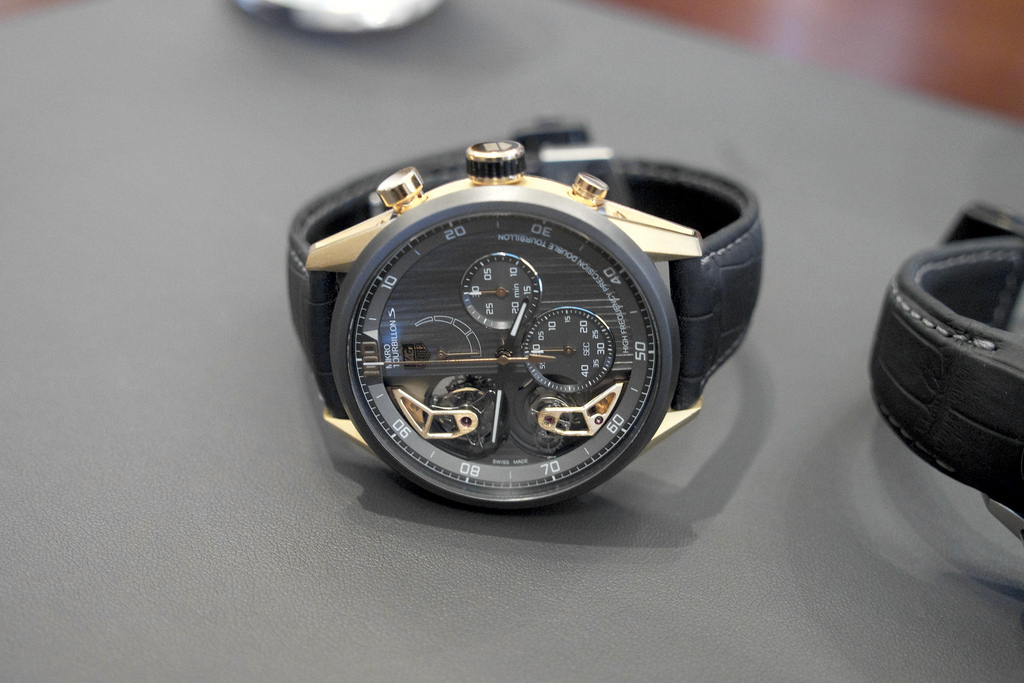Yesterday, we sat down with TAG Heuer SA Vice President Guy Sémon, to discuss the brand’s high tech watchmaking efforts. Specifically, we discussed the brand’s highly complicated dual architecture timepieces: the Mikrograph, the Mikrotimer, the Mikrogirder, and the Mikrotourbillon S.
These cutting-edge ultra-high frequency timepieces act as a halo for the brand, they show off the technical prowess of TAG Heuer. But, Sémon was careful to mention that all of these efforts — although important for their image — are ultimately designed to be used in regular timepieces. With the idea that accuracy (or chronometry – the advancement of watchmaking) is what is most important. If you haven’t yet seen what a 5/10,000th of second chronograph hands looks like as it sweeps around the dial 20 times per second. The watch is mechanical, yet it operates at an almost unfathomable speed, and it sounds like an electronic motor, which is to say: silky smooth.
TAG Heuer Grand Carrera Pendulum introduced in 2010
Apart from Montblanc with their Bi-Frequence 1000, there is nobody else doing anything like this.
That said, TAG Heuer is not stopping there. This Spring in Basel, they will introduce two more high-frequency timepieces that are a culmination of everything they know.
One-piece will be a concept watch with both double pendulums (magnetic pendulums that is) and double magnetic tourbillons. No hairsprings required. The other piece, a timepiece that is expected to be ready for commercial sale by September of this year, is the Carrera Mikrograph Pendulum. It will feature a magnetic pendulum regulator system for both the timekeeping and chronograph (sans the hairsprings, but with the same accuracy as a hairspring equipped movement). Initially, TAG couldn’t create the Pendulum movement as accurate as a spring equipped movement, but now — thanks to a new temperature stabilized material that TAG Heuer has developed — they have.



